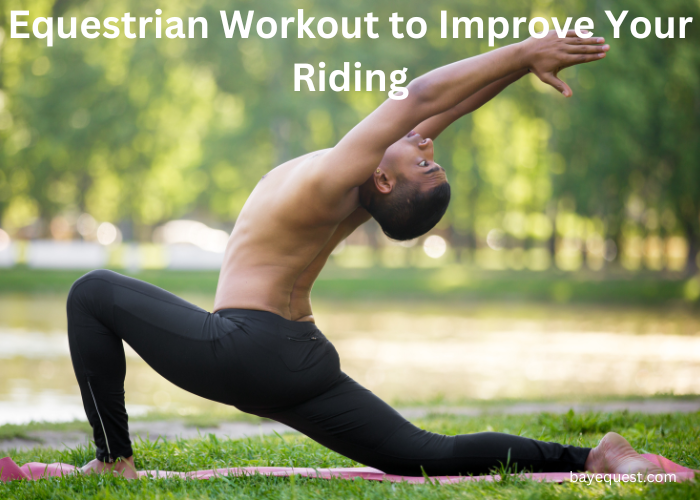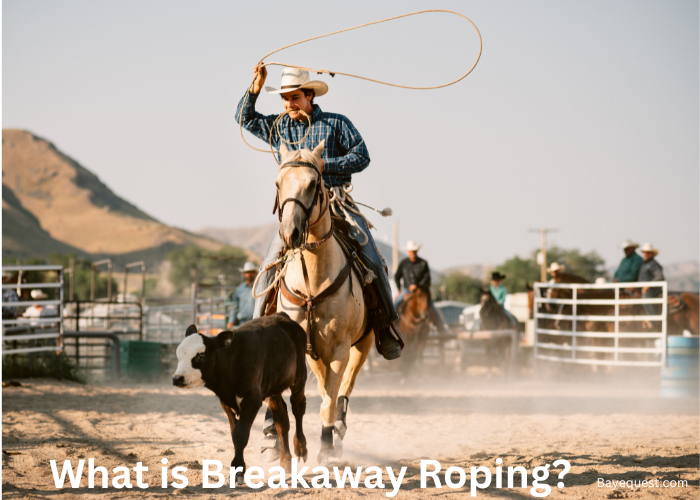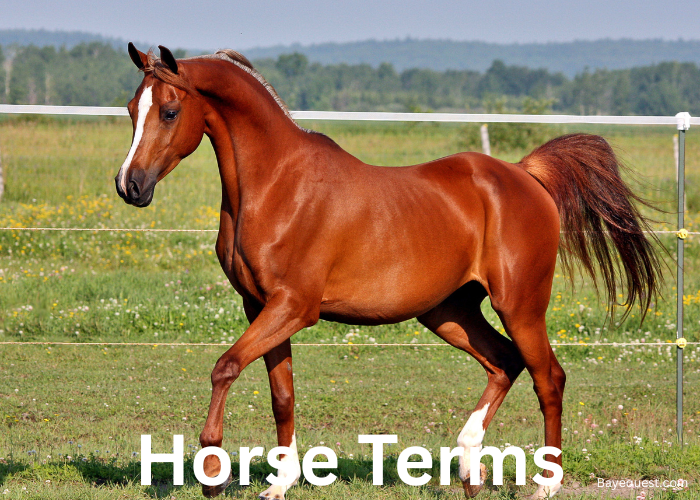Looking to mix up your fitness routine with something unique? Equestrian workouts might be your new favorite way to break a sweat.
These routines target your core, legs, and upper body, giving you a full-body challenge that’s anything but boring. You don’t need a horse to train like a rider—just some determination and a sense of adventure.
So, tighten that core, steady your balance, and get ready to build strength in a way that feels fresh and exciting. Let’s get moving, rider style.
Equestrian Workout to Improve Your Riding: Key Takeaway
- Side oblique crunch
- Bicycle
- Abdominal knee tucks
- Oblique plank
- Straight leg scissor kick
- Single leg deadlift
- Bicep curls
- Overhead press
- Upright X-row
- Tricep extension
- Resisted pushup
- Calf raise
- Lunge
- Monster walk
- Squat
- Glute kickbacks
- Running man
- Swimming
- Running
- Cycling
- Yoga
- Stability ball exercises
- Tai Chi basics
Why Do Horseback Riders Need to Workout?
Why should horseback riders bother with working out? Well, if you ride, you know it’s not as easy as just sitting there and letting the horse do all the work.
Riding is a full-body exercise that demands strength, balance, and endurance. When you’re stronger, not only do you ride better, but you also help prevent injuries for both you and your horse.
Workouts designed for riders focus on the muscles that matter most in the saddle. Plus, having good cardiovascular fitness means you can enjoy longer rides without getting tired so quickly.
So, whether competing or riding for fun, a good workout routine can make all the difference.
Read also: Horseback Riding Equipment.
Which Muscles Are Important for Horse Rider Fitness?
When it comes to horse riding, certain muscles play a big part in how well you handle the ride.
First up, your core is crucial. It helps you stay balanced and stable on the horse. Then, there are your leg muscles—the quads, calves, and hamstrings. These muscles help you maintain the right posture and control the horse’s movements.
Your back muscles are also key. They support your spine and help you stay upright and comfortable, even on long rides. And don’t forget your shoulders and arms. They need to be strong to hold the reins and guide the horse effectively.
So, keeping these muscles in shape isn’t just about looking good—it’s about making your rides smoother and safer.
Core Workouts for Equestrians
Core strength is a game-changer for any equestrian. It helps with everything from maintaining your balance in the saddle to controlling the horse’s movements.
Let’s dive into some core exercises tailored for equestrians, focusing on improving your riding experience.
1. Side oblique crunch
This exercise targets the oblique muscles, which are critical for any rider. To do a side oblique crunch, lie on your side, legs stacked, and bend your knees slightly.
Place your lower arm on the ground for support and the other hand behind your head. Lift your upper body towards your hips while squeezing your side muscles. Slowly lower back down.
This move strengthens the muscles on your sides, helping you maintain posture and balance when riding.
2. Bicycle
Lie on your back with your hands behind your head and lift your legs to a 90-degree angle. Start by bringing your right elbow towards your left knee while extending your right leg out. Alternate sides like you’re pedaling a bike.
This exercise is excellent for engaging the entire core, particularly the deep abdominal muscles. Improved core strength from this exercise means better balance and less fatigue during long rides.
3. Abdominal knee tucks
Start in a plank position with your hands under your shoulders and your body in a straight line. Pull your right knee towards your chest and then extend it back. Repeat with the left knee.
This exercise strengthens the lower abdomen and hip flexors. It also enhances your ability to maintain a deep seat and steady posture in the saddle.
It is such an important exercise for effective communication with your horse.
4. Oblique plank
Begin in a standard plank position. Rotate your body to turn into a side plank, stacking one foot on top of the other and extending your free arm towards the sky.
Hold this position, then return to the center and switch sides. This strengthens the oblique muscles, which are essential for rotational movements in riding.
Oblique plank helps you with movements that require turning or bending in the saddle.
5. Straight leg scissor kick
Lie on your back, hands under your hips for support. Lift your legs off the ground slightly and scissor them: one leg up while the other is down, then switch.
Keep your legs straight and your core engaged. This exercise not only boosts lower abdominal strength but also enhances leg coordination and control.
All these are vital for using the stirrups and maintaining effective leg cues.
6. Single leg deadlift
Stand on one leg, a slight bend in the knee, holding a weight in the opposite hand. Tilt your torso forward while extending your free leg behind you, keeping your back straight and the weight close to your standing leg. Return to the start position.
This exercise is fantastic for building strength in the back, hamstrings, and glutes while improving balance. It’s particularly useful for equestrians because it mimics the stability needed on one leg when adjusting your position in the saddle.
Upper Body Equestrian Workout
Having a strong upper body is as important as a strong core for equestrians. It’s essential for everything from holding the reins to maintaining balance and posture on the horse.
Let’s break down some upper body exercises that are especially useful for riders.
7. Bicep curls
Stand with your feet shoulder-width apart, holding a dumbbell in each hand. Keep your elbows close to your torso and rotate your palms so they face forward.
Curl the weights while keeping your upper arms stationary, then lower them back down.
Bicep curls are great for strengthening the front of your arms, helping you maintain a firm grip on the reins and manage the horse’s movement more effectively.
8. Overhead press
Begin by standing with your feet hip-width apart, dumbbells at shoulder height, palms facing forward. Press the weights above your head until your arms are extended, then lower them back to shoulder height.
This exercise strengthens your shoulders and upper back. It’s crucial for holding your posture against the dynamic movement of the horse and for lifting and carrying tack.
9. Upright X-row
Stand with your feet hip-width apart, holding a dumbbell in each hand before your thighs. Lift the dumbbells diagonally across your body so each hand moves towards the opposite shoulder, forming an ‘X’ with your arms.
Then, lower them back down. This exercise targets multiple areas, including your shoulders, upper back, and biceps.
It improves your ability to pull and steer the reins, enhancing your control over the horse.
10. Tricep extension
Stand or sit with a dumbbell held by both hands. Lift the dumbbell over your head until your arms are stretched out straight.
Slowly bend your elbows to lower the dumbbell behind your head, then straighten your arms back to the starting position.
Tricep extensions strengthen the back of your arms. This is vital for holding the reins securely and performing steady, controlled movements.
11. Resisted pushup
Start in a pushup position, either on your toes or knees, with a resistance band across your back and under your hands or thumbs. As you lower yourself to the ground, the resistance band adds extra force you must push against to lift back up.
This not only strengthens your chest, shoulders, and triceps, but also simulates the resistance you feel from the horse. It generally improves your strength for better stability and control.
Lower Body Workout for Horseback Riders
Strong legs are fundamental for any horse rider. They help you maintain your seat, control the horse, and absorb the impact of trotting and jumping.
Here are some effective lower body exercises that build the strength and endurance needed for riding.
12. Calf raise
Stand straight with your feet hip-width apart. For a greater range of motion, do this on a step or on flat ground.
Rise onto your toes, lift your heels as high as possible, then slowly lower back down.
Calf raises strengthen your calves, which is crucial for stabilizing your legs against the horse’s sides and maintaining control, especially during jumps.
13. Lunge
Step forward with one leg, lowering your hips until both knees are bent at about a 90-degree angle. Ensure your front knee is directly above your ankle and your back knee is close to, but not touching, the ground.
Push back up to the starting position and switch legs. Lunges are great for building strength in your thighs and glutes, which improves your stability in the saddle and helps absorb the horse’s movement.
14. Monster walk
Place a resistance band around your thighs just above your knees. Squat slightly and step sideways, keeping the band taut, then step the other foot in the same direction.
Continue stepping out and together, moving across the room.
This exercise targets your hip abductors and glutes. It enhances your lateral stability, which is essential for controlling the horse during side movements.
15. Squat
Stand with your feet a bit wider than shoulder-width apart. Bend your knees and lower your hips as if you’re sitting in a chair, keeping your chest up and your knees behind your toes.
Push through your heels to return to the starting position. Squats strengthen the entire lower body, particularly the thighs and glutes, which help maintain a deep seat and absorb the impact in the saddle.
16. Glute kickbacks
Get on your hands and knees. Keeping one knee on the ground, kick the other leg back and up, keeping it bent at 90 degrees until your thigh is in line with your body. Return to the starting position and repeat.
Glute kickbacks focus on the rear muscles of your legs, crucial for powerful leg aids and improving your posture in the saddle.
17. Running man
Start in a lunge position with one foot forward and the other back. Jump and switch your legs in the air, landing back in a lunge with the opposite leg forward. Continue alternating quickly.
This exercise, often referred to as split squat jumps, develops leg and core strength and enhances cardiovascular endurance. It also makes it easier to handle long rides and competitions.
Endurance Horse Rider Workout
Endurance training is crucial for equestrians. Not just for the stamina needed in long rides or competitions but also for overall health and fitness. Here are three effective endurance activities how they can benefit riders.
18. Swimming
Swimming is a fantastic full-body workout that enhances cardiovascular health without stressing your joints. Start by choosing a swimming style you’re comfortable with. Aim for continuous swimming for at least 20-30 minutes.
Swimming improves lung capacity, builds endurance, and strengthens your core and limbs. This benefits riders because it supports posture stability on the horse and increases your ability to ride comfortably.
19. Running
Running is one of the simplest ways to boost cardiovascular endurance. Whether on a treadmill or outdoors, start at a pace that allows you to maintain a conversation. Gradually increase your duration and intensity over time.
Running strengthens your legs and improves your respiratory and cardiovascular systems. All these are essential for maintaining energy levels during demanding rides. It also builds mental toughness, helping riders stay focused and resilient in the saddle.
20. Cycling
Cycling, whether on a stationary bike or on the road, is another excellent way to build stamina. Start with moderate sessions of about 30 minutes and gradually increase the duration and intensity.
Cycling is good for building the thigh and calf muscles, which are vital for riding. It also enhances cardiovascular health and stamina, enabling you to endure longer rides without fatigue.
The rhythmic nature of cycling can also help with rhythm and pacing when managing a horse’s gait.
Balance and Coordination Exercises for Horseback Riders
Balance and coordination are key elements in horse riding. Balance affects everything from your ability to stay seated in the saddle to how effectively you can communicate with your horse.
Here are some exercises that can help equestrians improve these crucial skills.
21. Yoga
Yoga is a powerful tool for improving balance and coordination. Start with basic poses like the Tree Pose or Warrior III, which require you to balance on one leg while maintaining a calm and focused mind.
Regular yoga practice enhances your body awareness, flexibility, and core strength. These benefits directly translate to better posture and stability in the saddle, helping you move in sync with your horse.
22. Stability ball exercises
A stability ball exercise is excellent for developing your core strength and balance. Begin with simple exercises like ball squats or bridges.
For a greater challenge, try performing a plank with your forearms on the ball. The ball’s instability forces your body to engage multiple muscle groups to maintain balance.
All these mirror the dynamic balance required when riding, especially through uneven terrain or during complex maneuvers.
23. Tai Chi basics
Tai Chi focuses on slow, controlled movements and improves balance and coordination. Start with the basic Tai Chi forms, which involve gradual shifting of weight and precise arm movements.
Practicing Tai Chi increases your body awareness and control, which can help you achieve smoother transitions and more precise actions while riding. It also enhances your ability to remain calm and centered, which is essential for effective horse handling.
Interesting read: Equine gifts for horse lovers.
Summary: 23 Best Workout for Equestrians
| Equestrian workouts | Examples |
| Core exercises | Side Oblique Crunch Bicycle Abdominal Knee Tucks Oblique plank Straight Leg Scissor Kick Single leg deadlift |
| Upper body exercises | Bicep curls Overhead press Upright X-Row Tricep extension Resisted Pushup |
| Lower body exercises | Calf raise Lunge Monster walk Squat Glute kickbacks Running man |
| Endurance training for equestrians | Swimming Running Cycling |
| Balance and coordination exercises | Yoga Stability ball exercises Tai Chi basics |
Best Exercise for Horseback Riding: Conclusion
That wraps up our journey through the essential workouts for every rider. Whether it’s boosting your core strength, powering up your legs, or enhancing your balance, every exercise brings you a step closer to becoming a more skilled and confident equestrian.
Remember, the time and effort you invest in your fitness off the horse can make all the difference when you’re in the saddle. So, grab your workout gear and let’s strengthen that rider-horse connection.
Here’s to better rides and happier trails ahead. Stay fit, ride strong, and most importantly, have fun doing it.








